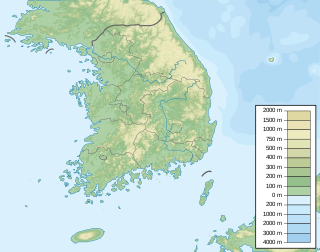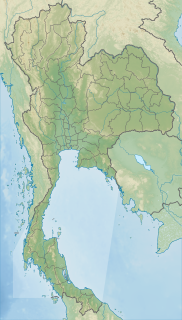
Pulp is a lignocellulosic fibrous material prepared by chemically or mechanically separating cellulose fibers from wood, fiber crops, waste paper, or rags. Mixed with water and other chemical or plant-based additives, pulp is the major raw material used in papermaking and the industrial production of other paper products.
Norske Skogindustrier ASA or Norske Skog, which translates as Norwegian Forest Industries, is a Norwegian pulp and paper company based in Halden, Norway and established in 1962. The corporation is the world's largest producer of newspaper (newsprint) and magazine paper, with 18 mills around the world.

Catalyst Paper Corporation is a pulp and paper company based in Richmond, British Columbia. It operates five pulp mills and paper mills, producing a combined 1.8 million tonnes of paper and 491,000 tonnes of market pulp annually. The mills mostly produce magazine paper and newsprint.
Norske Skog Skogn AS is a pulp mill and paper mill situated in Levanger, Norway, which produces newsprint. Situated on the Fiborgtangen peninsula in Skogn, the mill has three paper machines with a total annual capacity of 600,000 tonnes. Pulp is produced both from virgin fibers at an on-site thermomechanical pulp (TMP) mill and from recycled paper at a deinking (DIP) mill. Part of Norske Skog, it is the sole remaining newsprint mill in Norway.
Norske Skog Saugbrugs AS is a pulp mill and paper mill located in Halden, Norway, which produces supercalender (SC) magazine paper. Located in the river Tista in Tistedalen, the mill produces 550,000 tonnes per year in three paper machines. Pulp is produced both from virgin fibers at an on-site thermomechanical pulp (TMP) mill. Part of Norske Skog, it is the sole remaining magazine mill in Norway.

Norske Skog Follum is a paper mill located in Follum in Norway. The mill is part of the Norske Skog Corporation and opened in 1873 with the name Follum Fabrikker. It has three paper machines and produces 410,000 tonnes of newsprint annually.
Norske Skog Union was a paper mill located in Skien in Norway. The mill was part of the Norske Skog Corporation and opened in 1873 with the name Union Co. The mill had two paper machines that produced 240,000 tonnes of newsprint and book paper. It was closed down in 2006.

Paper is a thin sheet material produced by mechanically or chemically processing cellulose fibres derived from wood, rags, grasses or other vegetable sources in water, draining the water through fine mesh leaving the fibre evenly distributed on the surface, followed by pressing and drying. Although paper was originally made in single sheets by hand, almost all is now made on large machines—some making reels 10 metres wide, running at 2,000 metres per minute and up to 600,000 tonnes a year. It is a versatile material with many uses, including printing, packaging, decorating, writing, cleaning, filter paper, wallpaper, book endpaper, conservation paper, laminated worktops, toilet tissue, currency and security paper and a number of industrial and construction processes.
The Tasman Mill site is a pulp and paper mill located on Fletcher Avenue just outside the town of Kawerau in New Zealand. The Tasman Mill site is the largest single employer in the Eastern Bay of Plenty region. Three pulp or paper companies operate in Kawerau: Norske Skog operate the mechanical pulp mill and paper mill; Oji Fibre Solutions, formerly Carter Holt Harvey, operate the kraft pulp mill; and SCA who manufacture tissue and base paper.

Port Alberni Mill is a paper mill located in the Canadian town of Port Alberni, British Columbia, on the edge of the Alberni Inlet. Part of Paper Excellence, the mill has two paper machines which produce 336,000 tonnes. Port Alberni Mill produces directory, lightweight coated paper and specialty papers. The mill's papers are used in telephone directories, catalogues, magazines, brochures, inserts, flyers and food grade. The mill has 310 employees as of 2020.

Crofton Mill is a pulp mill and paper mill located in the Vancouver Island town of Crofton, British Columbia. The mill has 3 paper machines and 2 pulp machines, which produce 349,000 tonnes of newsprint and directory paper, and 355,000 tonnes of northern bleached softwood kraft.

Elk Falls Mill was a pulp mill and paper mill located in the Canadian town of Campbell River, British Columbia, operating between 1952 and 2010. At the end of its life, the mill had three paper machines, with a combined annual production of 373,000 tonnes of newsprint and 153,000 tonnes specialized papers.

Powell River Mill is a pulp mill and paper mill located in the Canadian town of Powell River, British Columbia. Part of Catalyst Paper, the mill has three paper machines which produce 469,000 tonnes of newsprint and uncoated fine paper. The mill has 441 employees as of 2014.

Snowflake Mill was a pulp mill and paper mill located in the US town of Snowflake, Arizona. The mill had two paper machines which produced 339,000 tonnes of newsprint and uncoated fine paper. It sourced its fiber from two deinking pulp lines. The mill has 293 employees as of 2014. Transport to and from the mill was carried out on the Apache Railway.
Jeonju Paper Corporation, trading as Jeonju Paper, is a South Korean pulp and paper company. Headquartered in Seoul, it operates Jeonju Mill and Cheongwon Mill, with a combined 1,030,000 tonnes annual production of paper, mostly newsprint. The company is owned by Morgan Stanley Private Equity Asia and Shinhan Private Equity. The company was established as the South Korean operating subsidiary of PanAsia Paper on 1 February 1999, PanAsia Paper Korea. Ownership passed to Norske Skog in 2005, with the company becoming Norske Skog Korea. They sold the company to the current owners in 2008, after which the current name was adopted.

Cheongwon Mill is a pulp mill and paper mill situated in Cheongju, South Korea. Owned by Jeonju Paper, the mill sources its fiber from deinking to feed a single paper machine producing newsprint. PM1 has an annual production of 183,000 tonnes, featuring a trimmed width of 6,380 millimeters (251 in) and a production rate of 1,300 meters (4,300 ft) per minute.

Jeonju Mill is a pulp mill and paper mill situated in Jeonju, South Korea. Owned by Jeonju Paper, the mill produces 850,000 tonnes of newsprint and magazine paper annually. The mill sources fibers both from virgin wood, including sawmill residue, as well as from deinking. The mill has four paper machines. The mill has the third-largest production capacity for newsprint in the world and the largest deinking mill in the world.

Malaysian Newsprint Industries Sdn Bhd is a pulp and paper company based in Petaling Jaya, Malaysia. It operates a single pulp mill and paper mill in Mentakab, which produces an annual 280,000 tonnes of newsprint sourced entirely from deinked pulp from recycled paper.

Singburi Mill is a pulp mill and paper mill situated in Sing Buri, Thailand. Owned by the CAS Group, the mill sources its fiber from deinking to feed a single paper machine producing newsprint. PM1 has an annual production of 125,000 tonnes. The mill had 239 employees in 2013, and was the sole manufacturer of newsprint in Thailand, approximately producing the entire country's consumption.

Norske Skog Walsum is a pulp mill and paper mill situated in the Duisburg neighborhood of Walsum, the German state of North Rhine-Westphalia. The mill starts operations in 1962, established by Haindl and owned by Norske Skog from 2001. Since the 1990s the mill had two paper machines producing lightweight coated paper, a type of magazine paper. Both paper machines have a trimmed width of 725 centimeters (285 in). PM4 has an annual production of 225,000 tonnes, PM10 has 215,000 tonnes. The mill used as its source one-third thermomechanical pulp, one-third kraft pulp and one-third coating. The mill is situated on the Rhine. Until production curtailment in 2013, the mill employed 460 people.















